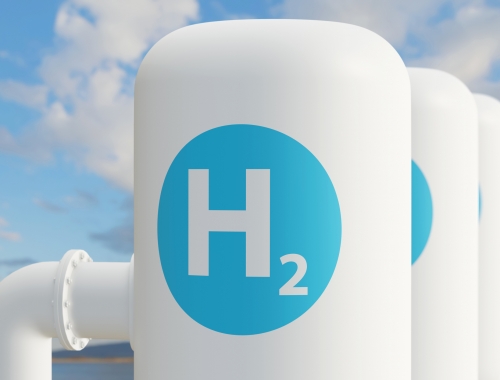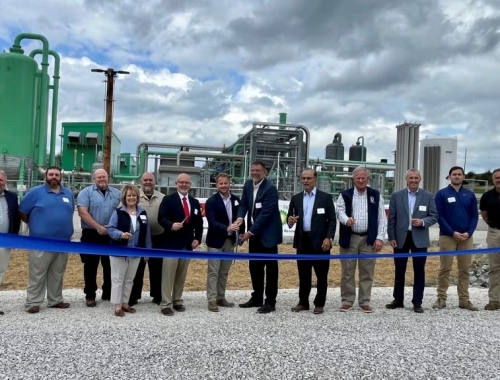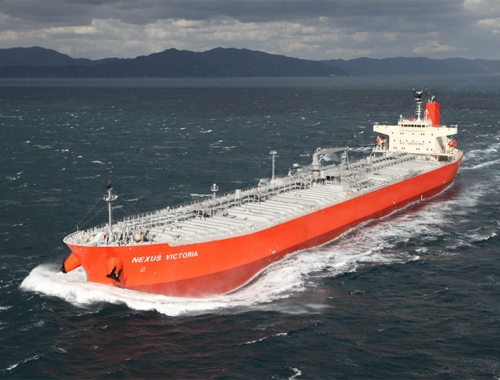ADNOC, Aramco continue to lead the Gulf H2 push
SUMMARY
State energy giants in the Middle East are blessed with options when moving into the nascent hydrogen sector, but the leaders are already well established. [NGW's Gas in Transition, Volume 1, Issue 7]
By Ian SimmGulf state energy firms have taken varying approaches to the energy transition, ranging from a full embrace to almost complete indifference. While this highlights the inequality of the transition and its different meaning depending on the company and its location, it is clearly borne of hydrocarbons’ importance to their bottom lines.
The ownership structure of these companies and their enviable role in global oil, gas and fuels markets have allowed them a longer grace period than most international majors, but there are signs that change is coming.
Leading the pack are Abu Dhabi National Oil Co (ADNOC) and Saudi Aramco as they continue to navigate the delicate balance between state control and attracting foreign investment, while Oman’s OQ has followed suit with ambitious plans of its own. Qatar Petroleum has rebranded as Qatar Energy in a nod to the transition, but comparisons are challenging given that its key focus is gas rather than oil.
At the other end of the spectrum, Kuwait Petroleum Corp (KPC) has been notable by its near complete silence on energy transition with renewables accounting for less than 1% of the country’s energy generation despite its solar and wind potential.
For those engaging in the transition, plans have centred around broad ambitions for renewables and a desire to leverage low-cost and easy-to-produce oil and gas reserves to replicate that market leadership in blue and green hydrogen, particularly targeting Asian markets.
Still, despite progress with pilot projects and one-off shipments, the chicken-or-egg questions pertaining to the supply chain persist and pinning down these companies on their hydrogen production targets has been challenging.
Opportunity and existential threat
These moves come as countries around the world reassess their energy mix to embrace the energy transition while prominent voices, most notably the International Energy Agency (IEA), have called for an end to oil and gas field development.
Such moves are likely at least decades away, but for rentier states of the Gulf, even the thought of a global shift away from conventional fuels presents an existential threat.
However, leveraging first gas and then copious solar and wind potential offers an opportunity to reconfigure and diversify their economies while increasing the availability of crude oil which can be transported far more easily. By transporting green or blue hydrogen in LPG or ammonia form, they have identified an opportunity to add a more environmentally friendly fuel to their export slate.
In the case of Qatar, with gas not yet being vilified for its environmental impact in the same way that oil is, its state energy firm is using this position to buy some time. While it has rebranded to emphasise efforts to develop cleaner energy, Saad Sherida Al-Kaabi, the company’s president and CEO and Qatar’s minister of state for energy affairs recently told S&P Global Platts that Qatar Energy would watch the development of the hydrogen market closely. “Once it becomes mature to where there’s a good chance for us to commercialise this area, we will be interested in looking at it,” he added, noting that the company will begin solar production from an 800 MW facility in 2022 with another facility of the same size expected to follow.
ADNOC
ADNOC and Aramco have kept pace with each other, signing various similar deals with companies and state entities in Asia – unsurprising given that the Saudi firm believes the first hydrogen markets will emerge in Japan and South Korea by the end of the decade.
The Emirati firm is developing a 1mn metric ton/year blue ammonia facility at the TA’ZIZ chemicals complex, located beside the Ruwais downstream hub where it already produces more than 300,000 mt/yr of hydrogen. In August, ADNOC and Fertiglobe sold a cargo of blue ammonia from their Fertil plant at Ruwais to Itochu for the Japanese firm to use in a pilot project to decarbonise its refining operations.
This followed deals earlier in the year with Malaysia’s Petronas, South Korea’s GS Energy, and Japan’s INPEX, JERA and the Japan Oil, Gas and Metals National Corp to explore collaborative opportunities in the area of blue hydrogen and ammonia, leveraging relationships built over many years of foreign involvement in the development of Emirati oil and gas fields.
Aramco
Meanwhile, Saudi Arabia’s hydrogen landscape is dominated by the $5bn development of a 1.2mn mt/yr green ammonia plant at the futuristic NEOM megacity and suggestions by the energy minister of piping Saudi green hydrogen to Europe, but Aramco is making progress in its own right.
In 2020, it exported the world’s first blue ammonia shipment, a 40-mt cargo under a pilot project with Japan’s Institute of Energy Economics (IEEJ) gasifying oil residues from refineries to generate blue ammonia and capturing 50 mt of CO2 to be used in methanol production at and in enhanced oil recovery (EOR) at the ‘Uthmaniyah field.
This year, Aramco CTO Ahmad al-Khowaiter told Bloomberg that the company was “going to have a large share” of the blue hydrogen market, though would not disclose anticipated production levels. He did, however, say that he expects Aramco will spend around $1bn to capture carbon for every 1mn mt of blue ammonia it produces, excluding the $3/barrel of oil equivalent cost of gas production.
In March, it agreed a deal with South Korean affiliate Hyundai Oilbank to export LPG for conversion to hydrogen for use in desulphurisation facilities and to fuel vehicles. Aramco will then reimport the emitted CO2 for use in EOR.
This week, another Korean affiliate, S-Oil said that it would import blue ammonia produced by Aramco and work to establish a hydrogen ecosystem with consortium partners Samsung C&T and Korea Southern Power. Each of the parties is likely to be an offtaker in this arrangement, using hydrogen for power generation and desulphurisation.
This strategy adheres with Aramco’s long-held ambition of doubling its global refining footprint as a means by establishing what it calls ‘dedicated crude outlets’. These relationships allow the company to guarantee long-term crude sales and protect itself from market volatility.
With the company also holding a 25% share in Idemitsu as well as refineries in China, Malaysia and the US, ammonia supply arrangements to these facilities should not come as a surprise. Meanwhile, as talks near a conclusion for Aramco to acquire a stake in the downstream arm of India’s Reliance Industries which is also entering the hydrogen market, both hydrogen and crude offtake are likely to be included in the contract terms.
OQ
OQ has taken a different approach, signing up partners InterContinental Energy of Hong Kong and Kuwait’s EnerTech to build a green hydrogen facility that will be powered by 25 GW of solar and wind energy.
The Omani firm has said that the facility will be capable of producing “millions of tonnes of zero-carbon green hydrogen per annum” when it comes on stream, though a final investment decision is not anticipated before 2026.
Though a site has not yet been formally identified, the partners have been studying the solar and wind potential of Al-Wusta governorate, the location of a major industrial hub centring around a refinery and petrochemicals facility Duqm and the Ras Markaz oil storage park.
OQ has already partnered with Unipec and Belgium’s DEME Concessions to develop the Hyport facility at Duqm, a hydrogen plant powered by 1.3 GW of solar and wind that will process ammonia for export via the port’s export terminal and nearby storage units.
Just as the region is blessed with some of the most abundant reserves of oil and gas, its potential for solar and wind powered generation is also enviable and state firms throughout the Gulf have a wealth of options as they seek to maintain their market leadership.








